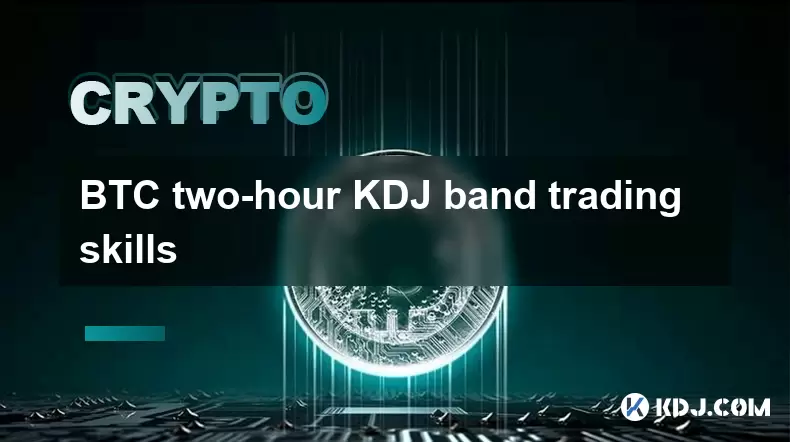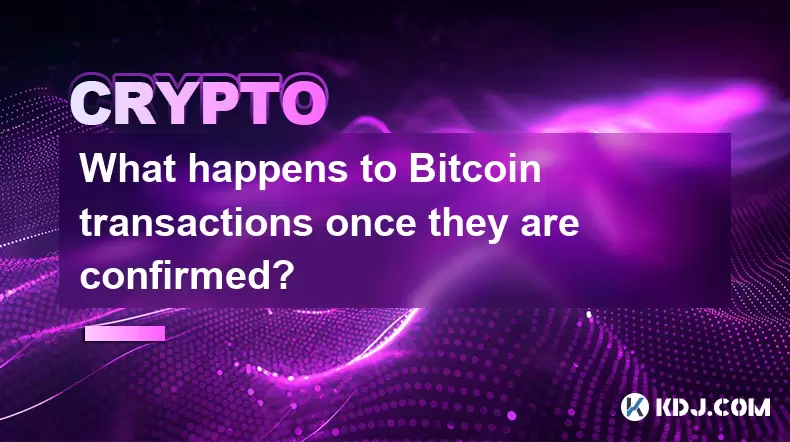-
 Bitcoin
Bitcoin $116400
-0.36% -
 Ethereum
Ethereum $4033
3.40% -
 XRP
XRP $3.302
-1.26% -
 Tether USDt
Tether USDt $1.000
-0.02% -
 BNB
BNB $796.1
1.67% -
 Solana
Solana $177.8
1.89% -
 USDC
USDC $0.9999
0.00% -
 Dogecoin
Dogecoin $0.2314
4.09% -
 TRON
TRON $0.3381
0.14% -
 Cardano
Cardano $0.7989
1.22% -
 Stellar
Stellar $0.4496
-1.84% -
 Chainlink
Chainlink $20.42
9.42% -
 Hyperliquid
Hyperliquid $41.17
0.88% -
 Sui
Sui $3.914
3.77% -
 Bitcoin Cash
Bitcoin Cash $584.7
1.52% -
 Hedera
Hedera $0.2632
-0.54% -
 Avalanche
Avalanche $24.09
3.40% -
 Ethena USDe
Ethena USDe $1.001
-0.02% -
 Litecoin
Litecoin $123.2
1.33% -
 Toncoin
Toncoin $3.318
-0.04% -
 UNUS SED LEO
UNUS SED LEO $8.984
-0.05% -
 Shiba Inu
Shiba Inu $0.00001323
2.85% -
 Uniswap
Uniswap $10.90
4.41% -
 Polkadot
Polkadot $3.999
3.34% -
 Dai
Dai $1.000
0.01% -
 Cronos
Cronos $0.1630
9.64% -
 Bitget Token
Bitget Token $4.484
0.82% -
 Monero
Monero $272.4
2.44% -
 Pepe
Pepe $0.00001173
6.03% -
 Aave
Aave $290.8
2.88%
BTC two-hour KDJ band trading skills
KDJ indicator, used for BTC on two-hour charts, signals potential reversals when lines cross in overbought/oversold regions, aiding in trading decisions.
Jun 02, 2025 at 11:21 am

Introduction to KDJ Indicator
The KDJ indicator, also known as the stochastic oscillator, is a popular technical analysis tool used by traders to gauge momentum and potential trend reversals in the market. It consists of three lines: K, D, and J, which oscillate between 0 and 100. The K line represents the fastest line, the D line is a moving average of the K line, and the J line is a more sensitive indicator that often leads the K and D lines. In the context of BTC two-hour KDJ band trading, understanding these lines and their interactions can significantly enhance trading decisions.
Understanding KDJ Bands
KDJ bands are essentially the overbought and oversold levels on the KDJ indicator. Typically, readings above 80 suggest that the asset is overbought, and readings below 20 indicate that the asset is oversold. These levels are critical for traders as they often signal potential reversal points. In the two-hour timeframe, these bands can provide short-term trading opportunities, particularly in the volatile cryptocurrency market like Bitcoin.
Setting Up the KDJ Indicator for BTC
To effectively use the KDJ indicator for BTC trading on a two-hour chart, you need to set it up correctly on your trading platform. Here's how to do it:
- Open your trading platform and select the Bitcoin chart.
- Change the timeframe to two hours.
- Add the KDJ indicator to your chart. This can usually be done by selecting 'Indicators' and then choosing 'KDJ' or 'Stochastic Oscillator'.
- Adjust the settings if necessary. The default settings are often K=9, D=3, and J=3, but you might want to experiment with different values to suit your trading style.
Identifying Trading Signals with KDJ Bands
When trading BTC using the two-hour KDJ bands, there are specific signals to watch for:
- Bullish Divergence: When the BTC price makes a lower low, but the KDJ indicator makes a higher low, this can indicate a potential bullish reversal.
- Bearish Divergence: Conversely, when the BTC price makes a higher high, but the KDJ indicator makes a lower high, it can signal a bearish reversal.
- Overbought/Oversold Conditions: When the KDJ lines cross above 80, it suggests that BTC might be due for a correction. When they fall below 20, it may indicate that BTC is oversold and due for a bounce.
- Golden Cross: A bullish signal occurs when the K line crosses above the D line within the oversold region.
- Death Cross: A bearish signal is generated when the K line crosses below the D line within the overbought region.
Practical Example of KDJ Band Trading on BTC
Let's consider a practical example of using the KDJ bands for trading BTC on a two-hour chart:
- Scenario: BTC has been in a downtrend, and the KDJ lines have recently crossed into the oversold territory, dipping below 20.
- Observation: You notice a bullish divergence forming as the BTC price makes a lower low, but the KDJ indicator shows a higher low.
- Action: You decide to enter a long position as the K line crosses above the D line within the oversold region, signaling a potential reversal.
- Monitoring: You keep a close eye on the KDJ lines as they move back above 20, indicating that the oversold condition is resolving.
- Exit Strategy: You set a target price based on resistance levels and use a trailing stop loss to maximize gains while protecting against a sudden reversal.
Risk Management in KDJ Band Trading
Effective risk management is crucial when trading BTC using the KDJ bands. Here are some strategies to consider:
- Position Sizing: Determine the size of your position based on your overall trading capital and risk tolerance. Never risk more than you can afford to lose.
- Stop Loss Orders: Always set a stop loss to limit potential losses. For KDJ trading, you might place the stop loss just below the recent swing low for long positions or above the recent swing high for short positions.
- Profit Targets: Set realistic profit targets based on key resistance and support levels. Consider taking partial profits at different levels to lock in gains.
- Diversification: Don't put all your capital into one trade. Diversify across different assets and timeframes to spread risk.
Combining KDJ with Other Indicators
While the KDJ indicator can be powerful on its own, combining it with other technical indicators can enhance its effectiveness:
- Moving Averages: Use moving averages to confirm trends. For example, if the KDJ signals a bullish reversal and the price is above a key moving average, it adds confidence to the trade.
- RSI (Relative Strength Index): The RSI can complement the KDJ by providing additional overbought/oversold signals. If both indicators show the same condition, it strengthens the signal.
- Volume: High volume can confirm the strength of a KDJ signal. If the KDJ indicates a bullish reversal and volume increases, it suggests strong buying interest.
Common Mistakes to Avoid in KDJ Band Trading
To maximize success in BTC two-hour KDJ band trading, it's essential to avoid common pitfalls:
- Overtrading: Don't trade every KDJ signal. Wait for clear, high-probability setups to increase your chances of success.
- Ignoring Market Context: Always consider the broader market context. A KDJ signal might be less reliable if it goes against the prevailing trend.
- Chasing Signals: Avoid entering trades too late after a KDJ signal has already moved significantly. Patience is key.
- Neglecting Risk Management: Never trade without a clear risk management plan. This can lead to significant losses.
Frequently Asked Questions
Q: Can the KDJ indicator be used for other cryptocurrencies besides BTC?
A: Yes, the KDJ indicator can be applied to any cryptocurrency. The principles of using the KDJ bands remain the same, but you should adjust your strategy based on the specific volatility and trading patterns of each cryptocurrency.
Q: How often should I check the KDJ indicator on a two-hour chart for BTC?
A: It's advisable to check the KDJ indicator at least every two hours when trading on this timeframe. However, you might also want to set up alerts for when the KDJ lines cross certain thresholds to stay updated without constantly monitoring the chart.
Q: Is the KDJ indicator suitable for beginners in crypto trading?
A: The KDJ indicator can be used by beginners, but it requires a good understanding of its components and signals. It's recommended that beginners start with a demo account to practice using the KDJ indicator before trading with real money.
Q: Can the KDJ indicator be used on other timeframes besides two hours?
A: Yes, the KDJ indicator can be used on various timeframes, from one minute to daily charts. The choice of timeframe depends on your trading style and goals. Shorter timeframes offer more frequent trading opportunities but can be more volatile, while longer timeframes provide more reliable signals but fewer trading opportunities.
Disclaimer:info@kdj.com
The information provided is not trading advice. kdj.com does not assume any responsibility for any investments made based on the information provided in this article. Cryptocurrencies are highly volatile and it is highly recommended that you invest with caution after thorough research!
If you believe that the content used on this website infringes your copyright, please contact us immediately (info@kdj.com) and we will delete it promptly.
- HAT Token Mania: Price Surges, Crypto Auctions, and Meme Coin Mayhem
- 2025-08-09 11:10:11
- Undervalued Cryptos Primed for a 2025 Takeoff: MAGACOIN, TRX, and SUI Lead the Pack
- 2025-08-09 11:10:11
- Bitcoin Goes to Harvard: Ivy League Embraces Digital Assets
- 2025-08-09 10:50:12
- Bitcoin, BlockDAG, and Toncoin: Decoding the Crypto Buzz in NYC
- 2025-08-09 11:30:11
- XRP, Pi Network, and Binance Listing Buzz: What's the Hype?
- 2025-08-09 11:30:11
- Arctic Pablo Coin: The Meme Coin Presale Promising High ROI in Q3 2025
- 2025-08-09 10:50:12
Related knowledge

Can the Bitcoin protocol be changed?
Aug 07,2025 at 01:16pm
Understanding the Bitcoin ProtocolThe Bitcoin protocol is the foundational set of rules that govern how the Bitcoin network operates. It defines every...

What happens to Bitcoin transactions once they are confirmed?
Aug 09,2025 at 05:22am
Understanding Bitcoin Transaction ConfirmationWhen a Bitcoin transaction is initiated, it is broadcast to the network and placed in a pool of unconfir...

How are Bitcoin transactions verified?
Aug 08,2025 at 06:57am
Understanding Bitcoin Transaction VerificationBitcoin transactions are verified through a decentralized network of nodes and miners that ensure the le...

How does decentralization make Bitcoin secure?
Aug 08,2025 at 09:35am
Understanding Decentralization in BitcoinDecentralization is a foundational principle of Bitcoin's architecture and plays a critical role in its secur...

What are some common misconceptions about Bitcoin?
Aug 07,2025 at 07:22pm
Bitcoin is Just Like Regular MoneyA widespread misconception is that Bitcoin functions identically to traditional fiat currencies like the US dollar o...

What is the role of nodes in the Bitcoin network?
Aug 08,2025 at 04:14pm
Understanding the Function of Nodes in the Bitcoin NetworkNodes are fundamental components of the Bitcoin network, serving as the backbone that ensure...

Can the Bitcoin protocol be changed?
Aug 07,2025 at 01:16pm
Understanding the Bitcoin ProtocolThe Bitcoin protocol is the foundational set of rules that govern how the Bitcoin network operates. It defines every...

What happens to Bitcoin transactions once they are confirmed?
Aug 09,2025 at 05:22am
Understanding Bitcoin Transaction ConfirmationWhen a Bitcoin transaction is initiated, it is broadcast to the network and placed in a pool of unconfir...

How are Bitcoin transactions verified?
Aug 08,2025 at 06:57am
Understanding Bitcoin Transaction VerificationBitcoin transactions are verified through a decentralized network of nodes and miners that ensure the le...

How does decentralization make Bitcoin secure?
Aug 08,2025 at 09:35am
Understanding Decentralization in BitcoinDecentralization is a foundational principle of Bitcoin's architecture and plays a critical role in its secur...

What are some common misconceptions about Bitcoin?
Aug 07,2025 at 07:22pm
Bitcoin is Just Like Regular MoneyA widespread misconception is that Bitcoin functions identically to traditional fiat currencies like the US dollar o...

What is the role of nodes in the Bitcoin network?
Aug 08,2025 at 04:14pm
Understanding the Function of Nodes in the Bitcoin NetworkNodes are fundamental components of the Bitcoin network, serving as the backbone that ensure...
See all articles

























































































